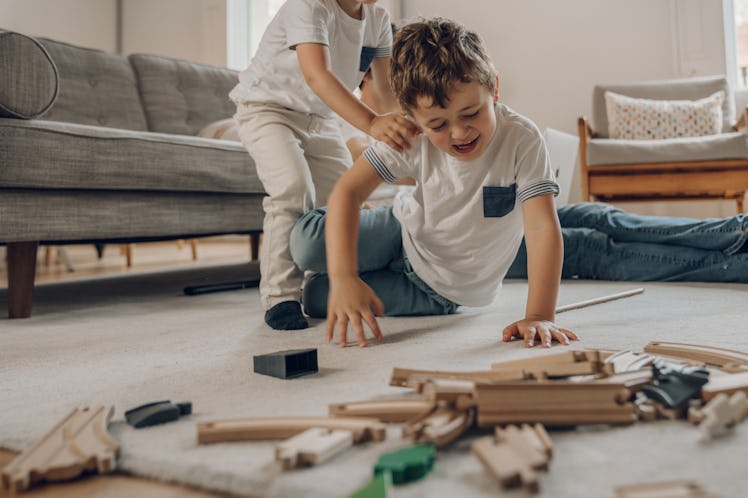How To Handle A Violent Child, According To A Psychologist
Children usually aren’t violent because they’re angry.

When a kid hits, yells, or bites, many parents view the behavior through one of two lenses: It’s indicative of a deep-seated anger issue or it’s desperation for catharsis. According to Alan Kazdin, Ph.D., a Yale University professor of psychology and child psychiatry, those are mid-century perspectives that modern research has debunked. A seemingly angry kid won’t necessarily become an angry adult. A seemingly angry kid may not be angry at all.
“We really don’t need the old views anymore because they haven’t helped, and they haven’t been supported,” Kazdin explains. “Many people who are angry do not hit walls. The issue has to do with all kinds of other things.”
Kazdn points out that childhood violence can be caused by issues with the brain circuits for impulsiveness or the fact that engaging in (or watching) aggressive behavior triggers the same reward systems as when adults tango with drugs, sex, and food. It could even be that the behaviors have genetic links, exacerbated by corporal punishment or violent media.
Having worked with kids he characterizes as “the most aggressive and the most violent children possible,” Kazdin is as focused on parental inputs as violet outputs. “Parents are missing endless opportunities to run up and say, ‘You’ve been great so far today,’ and pat them on the head,” he says.
Research rejects the idea that positive reinforcement is some sort of “hippy layover.” The notion that kids are soft because they receive too much praise may contain an unsubtle, unscientific insight: Hard kids can be softened with compliments.
“If you want your kid to stop hitting the wall, we can almost guarantee that punishing hitting the wall is going to do zip,” says Kazdin. “On the other hand, praising the child for not doing that works.”
Another technique is to leverage simulation, a technique Kazdin uses with the most explosive children he works with. Kazdin’s simulations work by role-playing a triggering scenario. The kid is then coached to respond to the role play with an appropriate behavior, like crossed arms and an angry scowl. When they do respond correctly, specific praise is given. Slowly, the reaction can be crafted and honed. Reactions require practice and, in a sense, muscle memory.
“The key to changing the behavior of a child is not having the child ‘understand.’ That’s ridiculous,” says Kazdin. “They need to practice the behavior repeatedly. We can’t get you to play Rachmaninoff by explaining how Rachmaninoff works.”
What’s more, with this behavioral practice, brain scans show actual changes in the brain as the kid gets better.
Still, there’s not a one-size-fits-all solution, and some kids do exhibit violent or disruptive behavior that is part of a larger issue that warrants more aggressive intervention. “The warning sign is a complaint from someone else,” says Kazdin. “It will often be the school. It’s about impairment: anytime a behavior is interfering with functioning in daily life.”
If the behavior is truly worrisome, Kazdin suggests that parents take their children to the pediatrician. Nearly half of pediatric visits are for behavioral issues, which makes family doctors the first line of defense in catching intervention-worthy behaviors.
The Four-Pronged Approach to Handling a Violent Child
- Don’t use violence. Modeling proper behavior is more practical than telling a child how they should act.
- Take your child to a pediatrician immediately if you receive repeated complaints from their school about violent behavior. When bad behavior interrupts daily life, it’s a warning sign that your child needs help.
- Do not take your child’s bad behavior as a sign of emotional release or deep-seated anger. Research has found that a child’s bad behavior can be linked to corporal punishment or violent media.
This article was originally published on